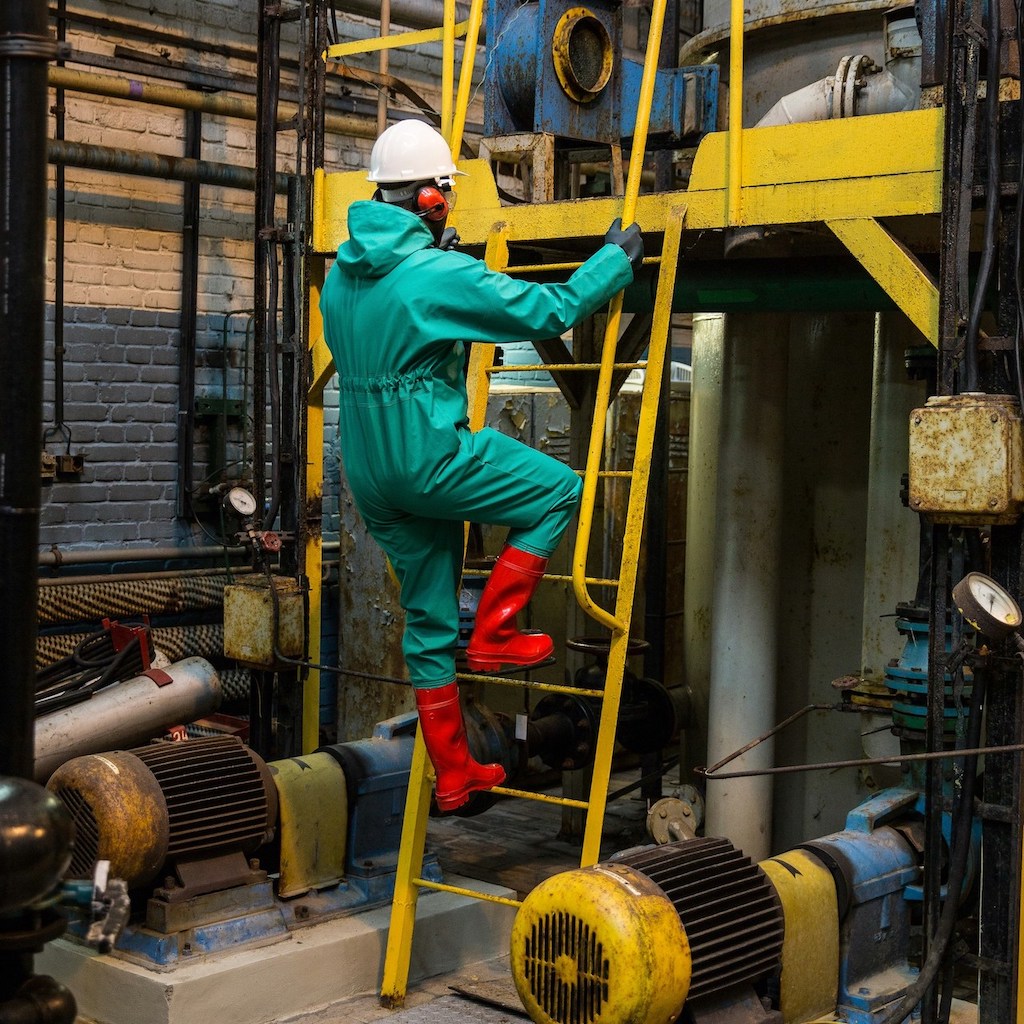Nov 5th 2024
Introduction to OSHA 1910.120 (HAZWOPER)
Identify PPE Opportunities of the OSHA 1910.120 Regulation (Haz-Waste Operations & Emergency Response) HAZWOPER Introduction to OSHA 1910.120 (HAZWOPER)
The Occupational Safety and Health Administration (OSHA) established the 1910.120 regulation, commonly referred to as the Hazardous Waste Operations and Emergency Response (HAZWOPER) standard, to safeguard workers dealing with hazardous waste and emergency situations. HAZWOPER outlines stringent safety protocols, including personal protective equipment (PPE) requirements, to minimize exposure risks and maximize safety in hazardous environments.
Understanding the Scope of OSHA 1910.120
The HAZWOPER standard impacts various sectors, including waste treatment, emergency response, environmental cleanup, and chemical manufacturing. Workers within these fields are exposed to hazardous materials and volatile environments, necessitating comprehensive training and PPE usage to mitigate risks effectively.
What is PPE?
Personal Protective Equipment (PPE) encompasses all safety gear worn by workers to shield them from injury or illness caused by exposure to hazardous substances or environmental dangers. PPE is integral in creating a barrier between workers and hazardous materials, providing essential protection in high-risk settings.
HAZWOPER and PPE Requirements
OSHA 1910.120 mandates specific PPE requirements to ensure workers are protected in hazardous waste operations and emergency response scenarios. Proper PPE selection is essential, as each piece of equipment is designed to protect against specific risks, ranging from chemical exposure to physical hazards.
Identifying Potential Hazards in HAZWOPER Operations
Workers in hazardous waste operations encounter diverse threats, including chemical, biological, radiological, and physical hazards. Effective hazard identification and risk assessment are critical to selecting appropriate PPE that addresses the unique dangers of each work environment.

Types of PPE for HAZWOPER Operations
The PPE requirements in HAZWOPER operations cover several protective gear types, each targeting a specific risk:
- Respiratory protection for inhalation hazards
- Eye and face protection for splash risks
- Body protection against chemical spills
- Hand protection for handling hazardous materials
- Foot protection for on-site safety in rough terrains
Respiratory Protection: A Crucial PPE Component
Respiratory PPE is essential in environments with airborne hazards. The options range from air-purifying respirators (APRs) for low-toxicity scenarios to self-contained breathing apparatus (SCBA) systems for high-risk, oxygen-deficient areas. Proper respiratory selection ensures workers breathe clean air, avoiding harmful inhalation.
Chemical-Resistant Clothing and Body Protection
Body protection against toxic substances is paramount, and selecting the right chemical-resistant clothing is crucial. HAZWOPER specifies different levels of suits (A through D) based on exposure risks. Level A suits, for instance, offer the highest protection, while Level D is sufficient for minimal hazard exposure.
Importance of Eye and Face Protection
Eyes and face are vulnerable to chemical splashes and airborne particles. Protective eyewear, including goggles and full-face shields, is essential to prevent harmful substances from causing injury, particularly in high-exposure environments.
Hand Protection: Gloves and Arm Guards
Hand protection is vital in hazardous waste operations, with gloves offering a first line of defense. Different glove materials, such as nitrile or neoprene, are chosen based on chemical compatibility, ensuring workers’ hands are shielded from contaminants.
Foot Protection in Hazardous Environments
Workers require durable, slip-resistant footwear with puncture-resistant soles to navigate hazardous sites safely. Steel-toed or rubber boots provide necessary protection from sharp objects, chemicals, and unstable surfaces.
Proper PPE Selection and Hazard Evaluation
Selecting appropriate PPE involves a thorough hazard evaluation, where factors such as substance toxicity, duration of exposure, and physical demands are assessed. Material Safety Data Sheets (MSDS) assist in determining compatible PPE materials for specific substances.
PPE Levels in HAZWOPER Operations: Level A to D
HAZWOPER operations utilize PPE levels (A through D) to categorize protection levels. Level A offers the highest protection for unknown hazards, including a fully encapsulated suit and SCBA, while Level D provides basic coverage for minimal risks. Proper selection ensures workers are adequately shielded based on exposure.
Training and Education on PPE Use
PPE is only effective when used correctly, making training a critical component of HAZWOPER compliance. Comprehensive training familiarizes workers with proper donning, doffing, and maintenance procedures, promoting safe and effective use.
Maintenance and Care of PPE
Proper PPE maintenance ensures equipment remains functional and safe. Workers should follow specific cleaning protocols, inspect PPE regularly, and store it correctly to prevent contamination or wear, prolonging the lifespan of their gear.
Ensuring Proper Fit and Comfort in PPE
PPE effectiveness depends on fit and comfort. Ill-fitting PPE can compromise safety by exposing workers to risks. Adjusting PPE for individual comfort encourages compliance, ensuring full protection without impeding mobility.
Emergency Decontamination Procedures for PPE
Decontamination prevents cross-contamination, a critical practice in HAZWOPER operations. PPE decontamination procedures remove hazardous residues, protecting workers and maintaining hygiene in post-exposure scenarios.
Inspection and Replacement of PPE
Regular inspections help identify wear and tear or potential defects in PPE. Damaged equipment should be replaced promptly to maintain worker safety, and inspection logs provide documentation for compliance.
Compliance and Documentation for OSHA 1910.120 PPE Standards
Recordkeeping is essential under OSHA 1910.120, with documentation required for PPE selection, usage, and inspection. Compliance records ensure accountability and adherence to safety standards.
Conclusion: Enhancing Safety with Effective PPE Strategies
PPE is a critical component in the HAZWOPER standard, safeguarding workers in hazardous waste and emergency response operations. Following PPE protocols enhances safety, protecting workers from the unique challenges of hazardous environments.

